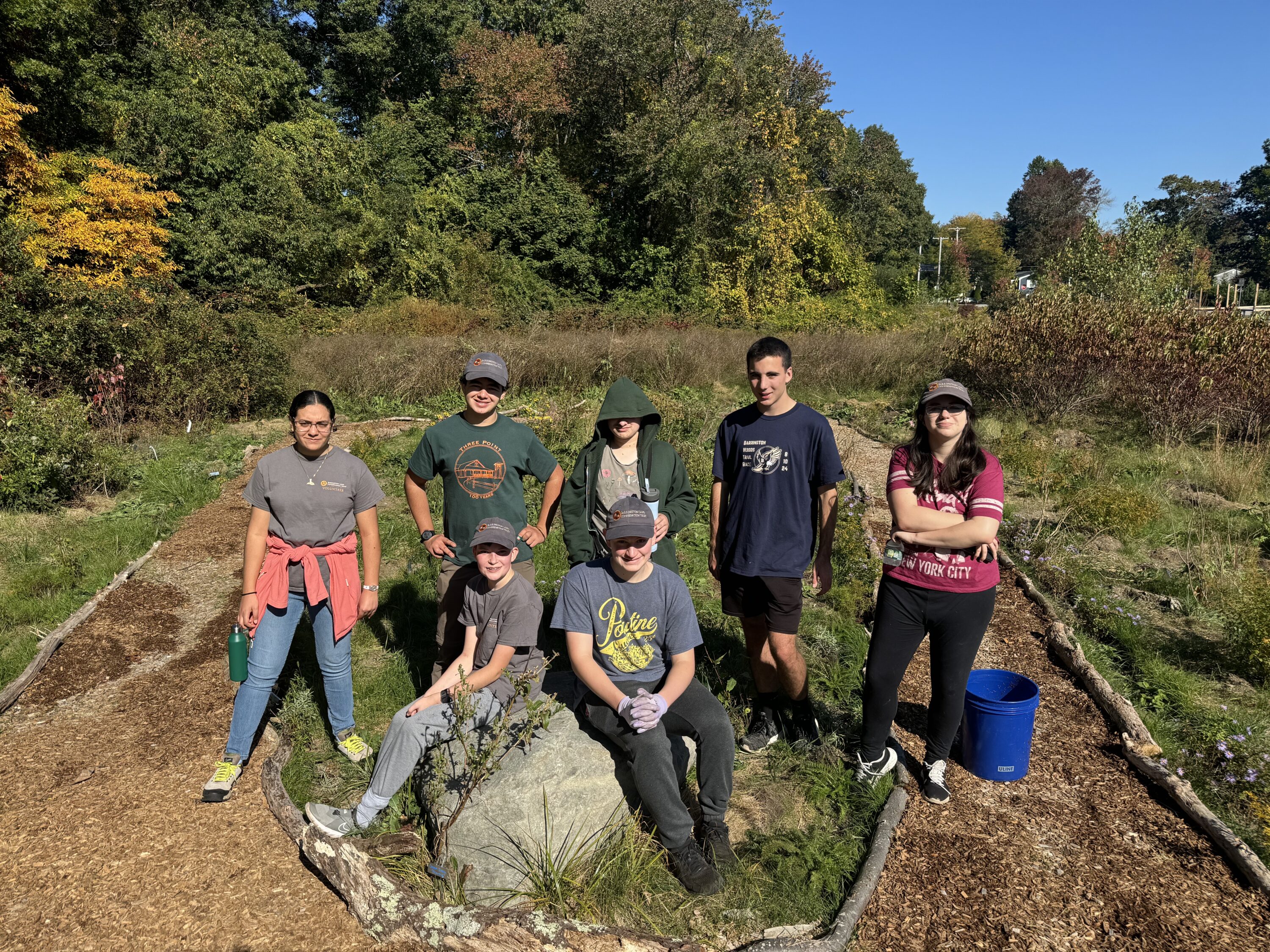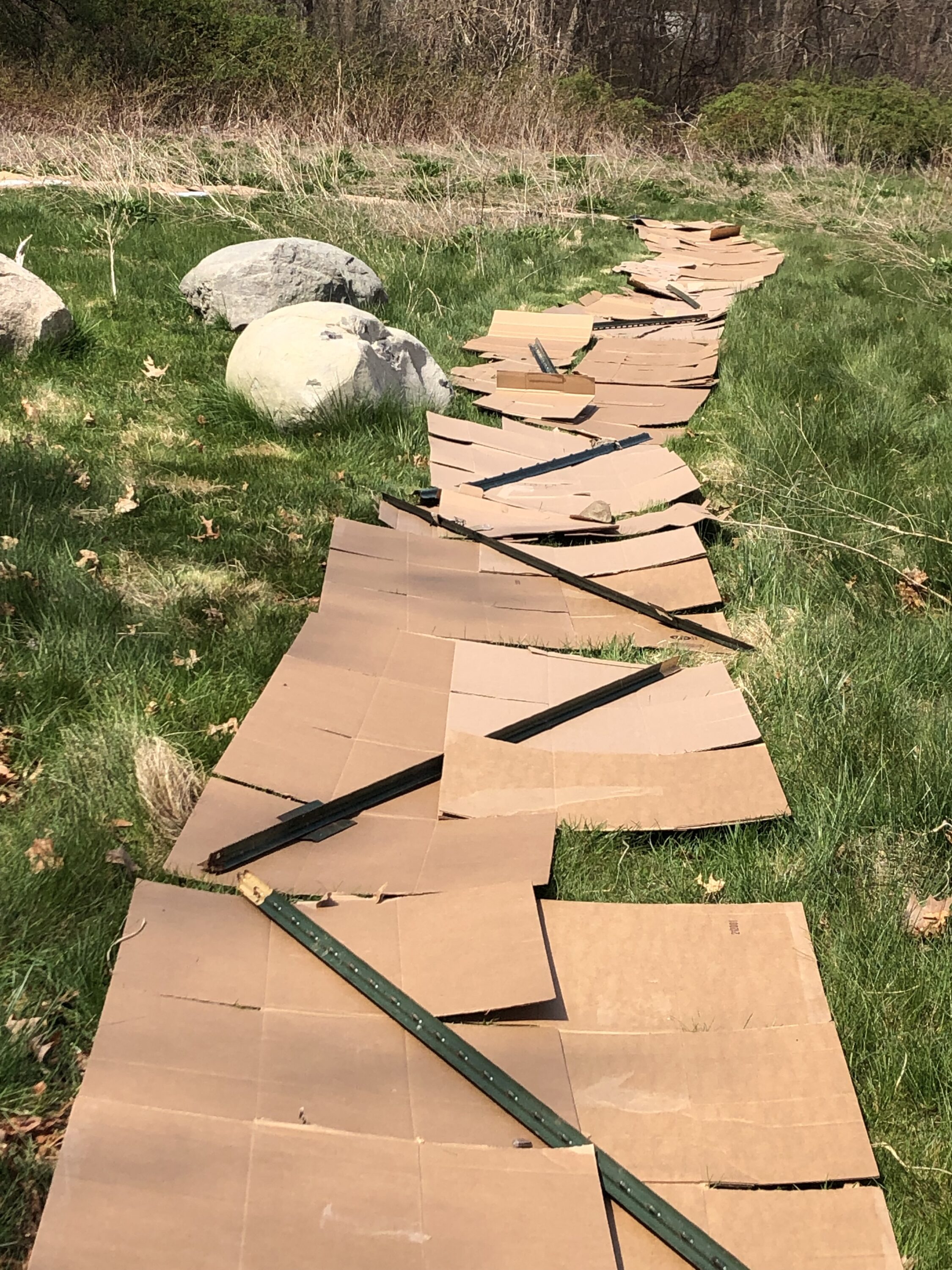 On September 10, 2024, while many of their parents were voting in the primary election, 14 members of the Student Stewardship Team of the Barrington Land Conservation Trust planted 275 native pollinator plants to create a new teaching garden at the Barrington Middle School.
On September 10, 2024, while many of their parents were voting in the primary election, 14 members of the Student Stewardship Team of the Barrington Land Conservation Trust planted 275 native pollinator plants to create a new teaching garden at the Barrington Middle School.
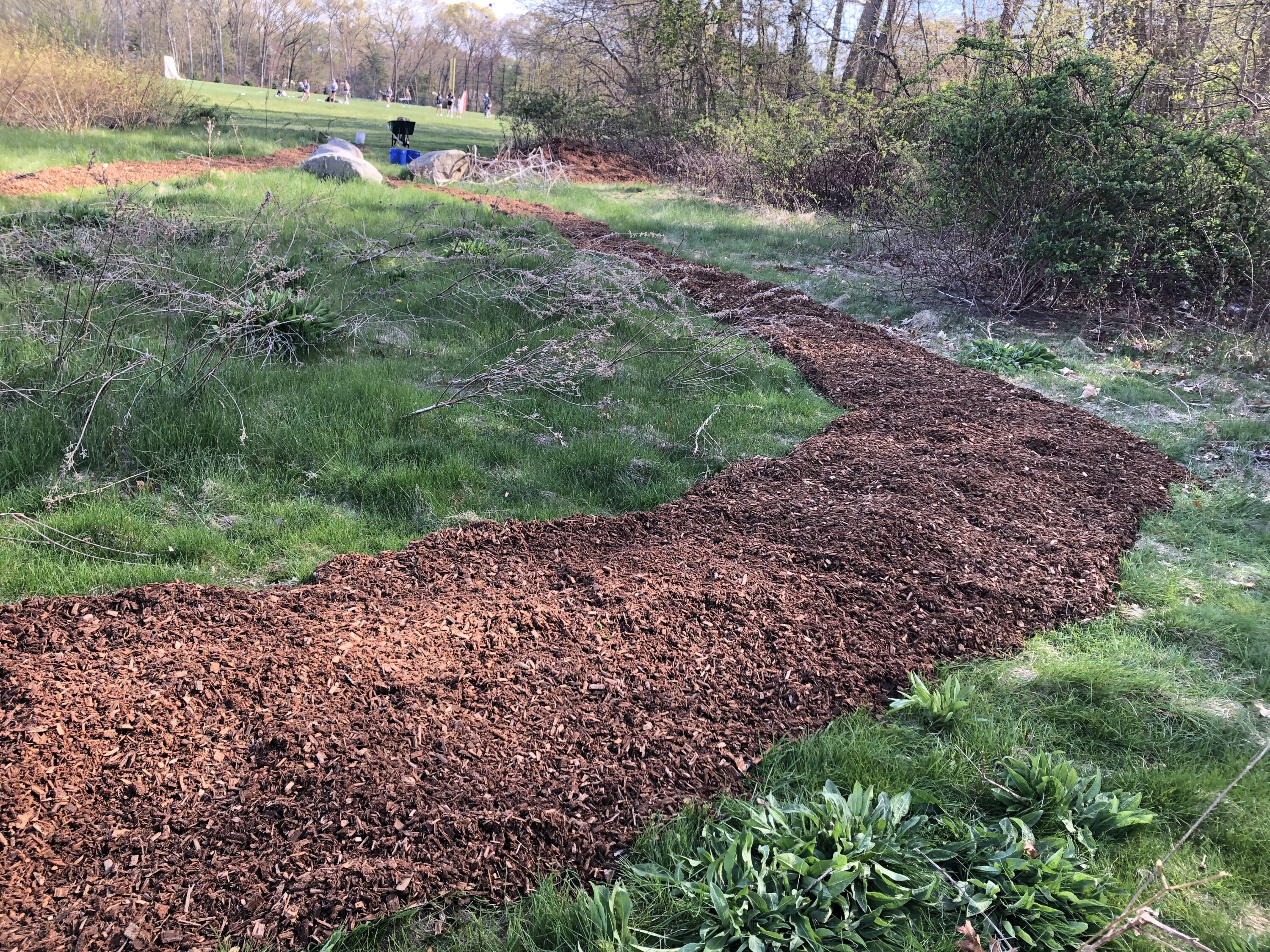 The idea was the brainchild of BMS teacher Julia Texeira, who was looking for ways to engage students in the natural world and help them understand the fragile habitats adjacent to their own school. A beautiful wetland populated with native plants was established when the new Middle School opened in 2019.
The idea was the brainchild of BMS teacher Julia Texeira, who was looking for ways to engage students in the natural world and help them understand the fragile habitats adjacent to their own school. A beautiful wetland populated with native plants was established when the new Middle School opened in 2019.
Now, on higher ground bordering the wetlands, a pollinator garden filled with hardy native plants provides a place where students can learn about the importance of pollinators without intruding on the wetland.
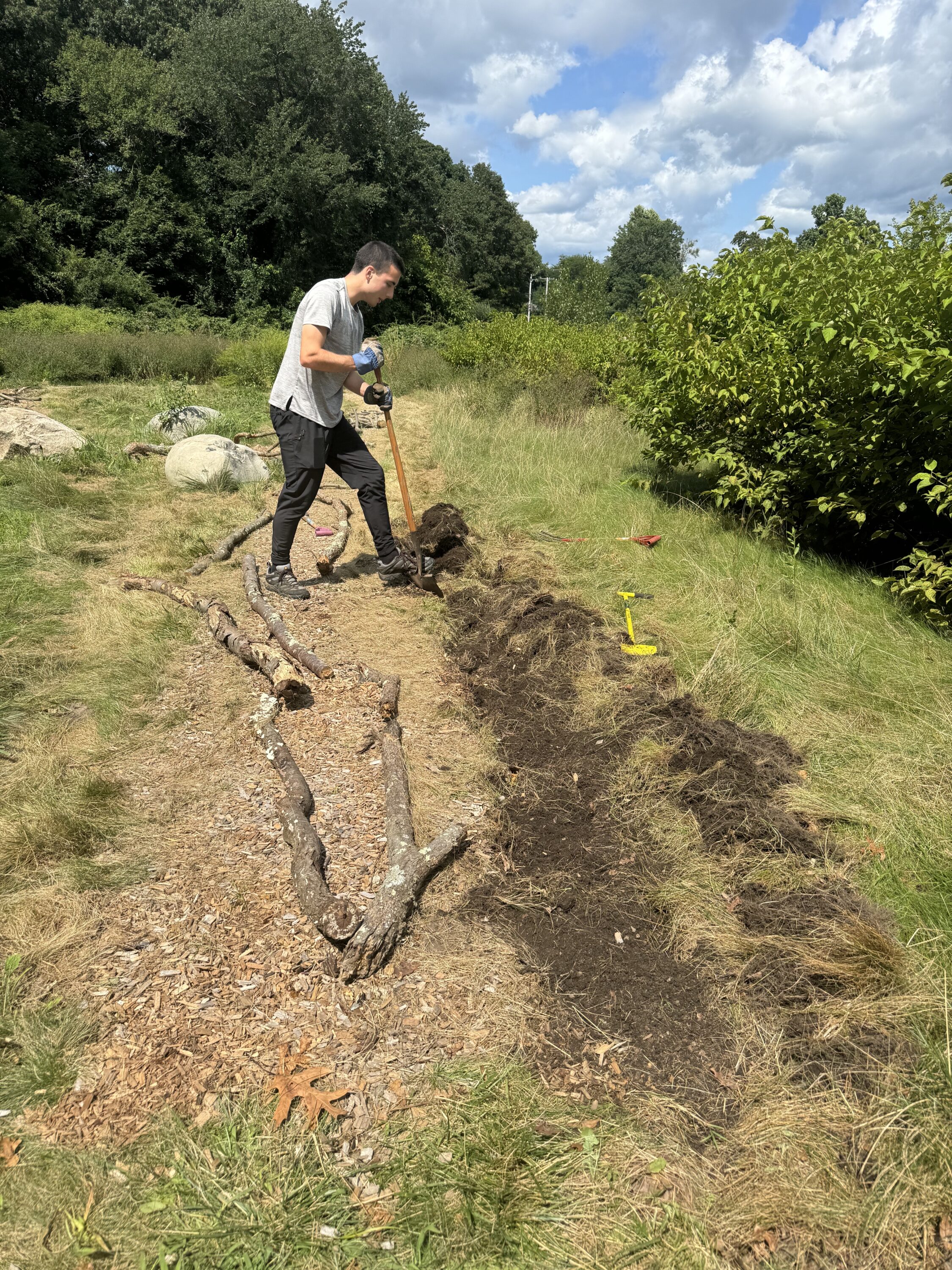 Approved by the Barrington School Committee in May 2024 as a zero-budget, student-powered effort, the first step was to lay the pathway. Students laid down a cardboard path covered with mulch to define the garden area.
Approved by the Barrington School Committee in May 2024 as a zero-budget, student-powered effort, the first step was to lay the pathway. Students laid down a cardboard path covered with mulch to define the garden area.
Over the summer, Barrington High School senior Connor Curran adopted the project as his senior project. He spent more than 20 hours digging out invasive species and preparing the garden for a fall planting. With no budget for plants, the Land Trust was thrilled to receive a donation of 275 native plants, funded by the Stormwater Innovation Center and provided by Prickly Ed’s Cactus Patch Native Plant Emporium.
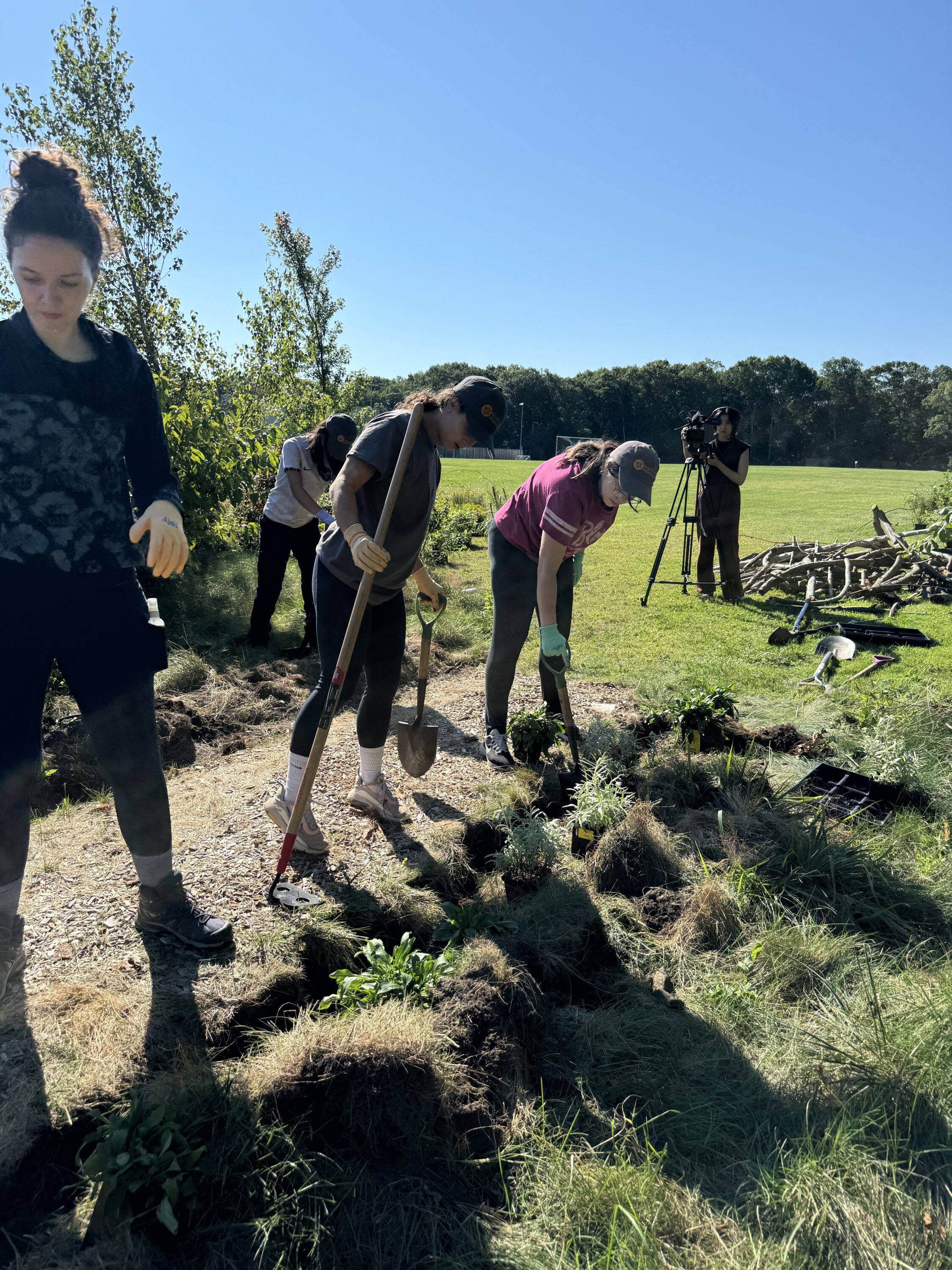 In October, the students installed plant markers to identify native plants that play an important part in our ecosystem. The team laid down a border made of downed tree limbs, repaired the mulch path, and trimmed back invasive plants along the border so that the teaching garden will be ready for Middle School students in the spring
In October, the students installed plant markers to identify native plants that play an important part in our ecosystem. The team laid down a border made of downed tree limbs, repaired the mulch path, and trimmed back invasive plants along the border so that the teaching garden will be ready for Middle School students in the spring
“My biggest takeaway was pride in watching the garden come together,” said Connor Curran. “Every time I went to work on the pathway, I knew I was contributing to a place that will do tremendous good long after I leave Barrington. It was great seeing the space progress from an area overrun with invasive plants to a home for a variety of native plants that support pollinators and wildlife. Every time I drive by the Middle School, I feel a sense of pride for the real tangible change that I made, along with the help of many others.”
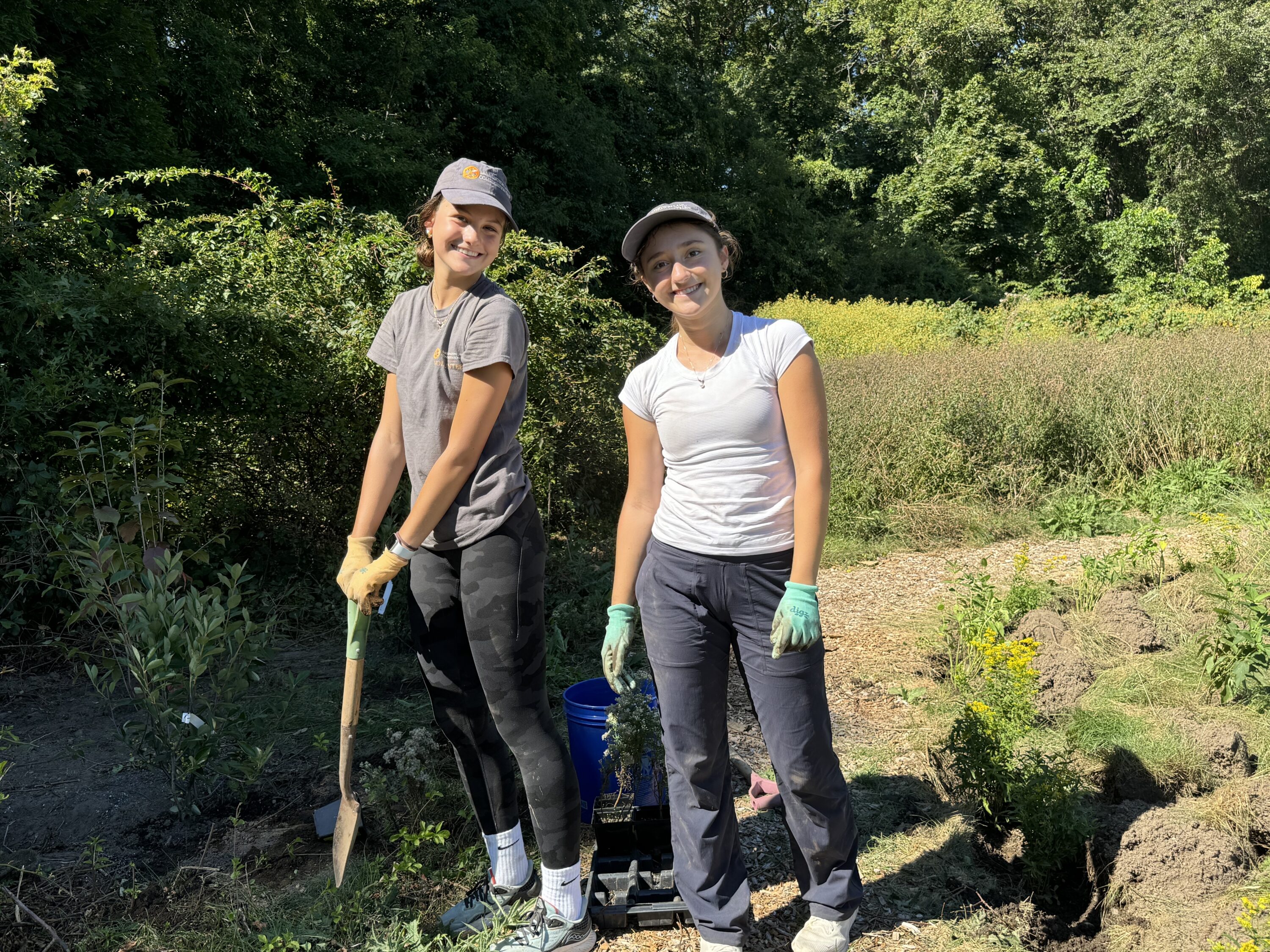 Thanks to a tremendous team effort involving student volunteers and adult mentors, along with volunteers from the Stormwater Innovation Center, the garden was planted in a single day, with touch up work over the next two weeks.
Thanks to a tremendous team effort involving student volunteers and adult mentors, along with volunteers from the Stormwater Innovation Center, the garden was planted in a single day, with touch up work over the next two weeks.
The Stormwater Innovation Center, part of the Audubon Society of Rhode Island, is a collaborative organization focused on the benefits of green infrastructure to mitigate water quality issues. Green infrastructure includes structures such as rain gardens, bioswales, green roofs, and infiltration basins, as well as non-structural practices like preserving green space, revegetating land, and reducing impervious cover such as roads and parking lots.
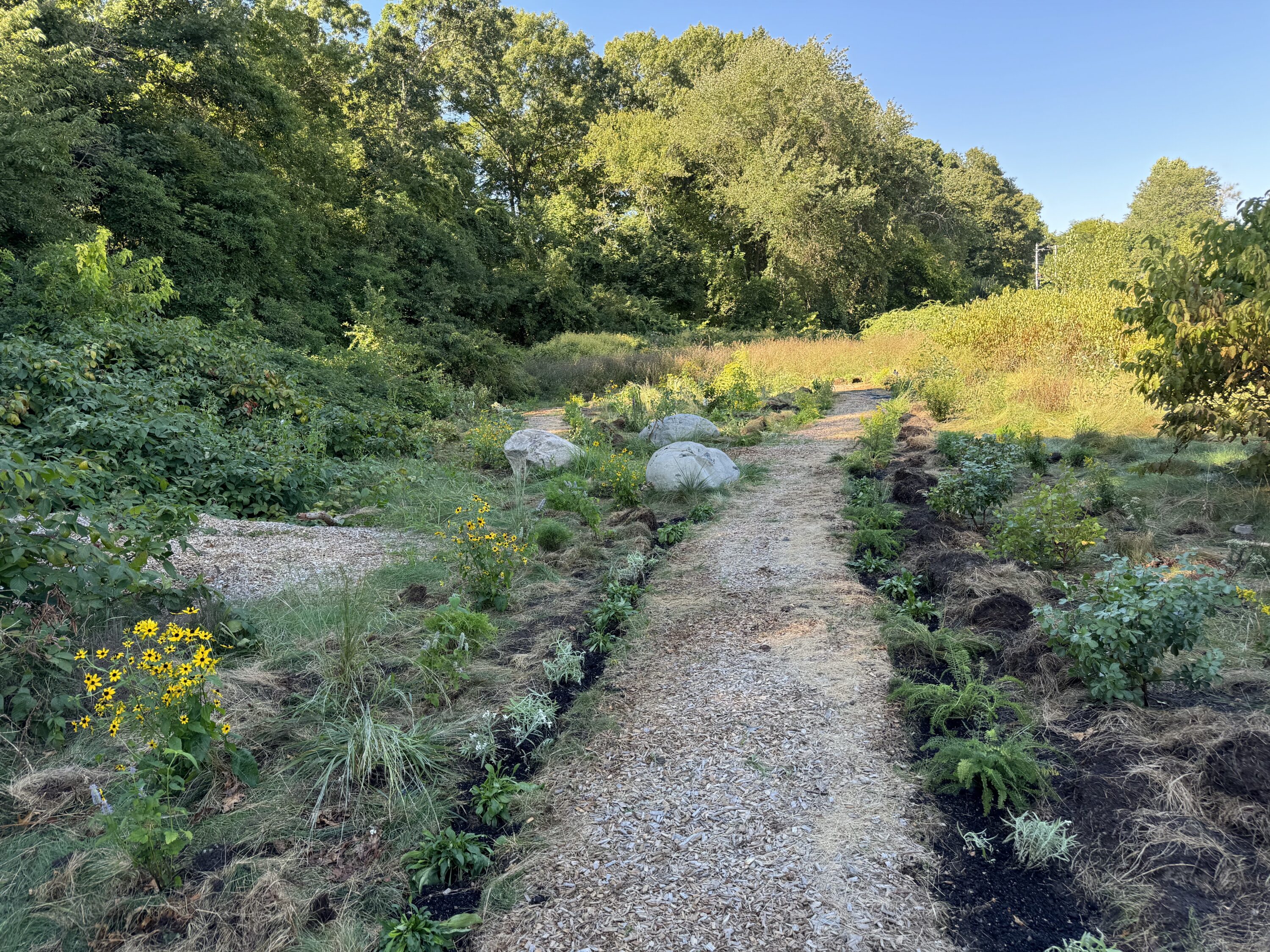 The installation of native plants at Barrington Middle School not only benefits pollinator species and other local wildlife, it also helps improve water quality by preventing erosion and soaking up and filtering precipitation that would otherwise run into storm drains.
The installation of native plants at Barrington Middle School not only benefits pollinator species and other local wildlife, it also helps improve water quality by preventing erosion and soaking up and filtering precipitation that would otherwise run into storm drains.
Water from storm drains runs into nearby water bodies unfiltered, eventually spilling into Narragansett Bay, carrying road exhaust, oils, trash, and harmful nutrients along with it. This wetland area allows water to soak in and percolate, preventing pollution from entering the water bodies we use for drinking, swimming, and fishing.
The Barrington Land Conservation Trust has protected hundreds of acres of conservation land and also works to educate the public about our natural resources. The Land Trust’s Student Stewardship Team welcomes high school students ages 14 to 18, regardless of where they live. For more information, visit our Student Stewardship page.
